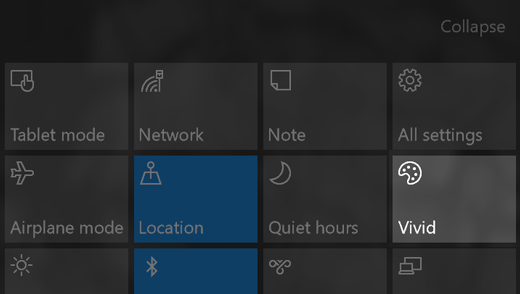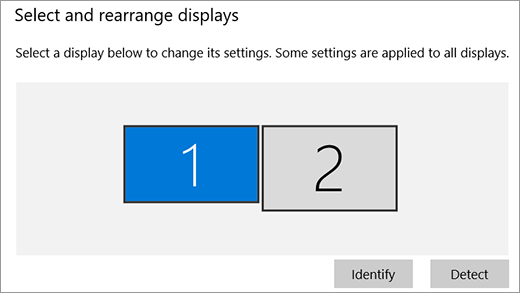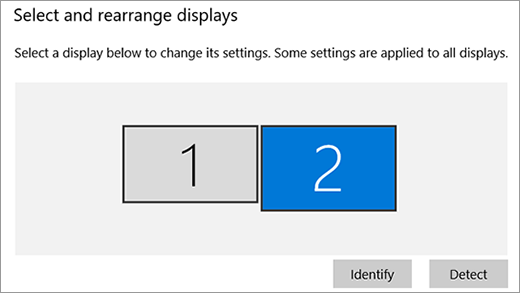Note: Some products might not be available in your country or region.
The colors on the screen aren’t accurate
Try switching the color profile.
Select the action center icon on the taskbar, then select the color profile you’d like to use.
Surface Studio models come with three color profiles:
-
sRGB On-screen image colors appear as they were intended. This is critical for professional imaging software and apps. It’s also helpful when looking at photos and videos and online shopping. Tech specs: xRGB/Rec. 709 standard, sRGB color gamut, D65 white point, and gamma = 2.2
-
DCI-P3 This mode is for creative professionals who work with digital cinema content in the DCI-P3 color space. If your camera supports RAW photos, you can save them as DCI images using image-editing software to preserve the wide-range of colors in the photos and display those colors accurately on the Surface Studio display. Tech specs: DCI-P3 color gamut, 6300 K white point, and a gamma of 2.6
-
Vivid This mode is perfect for viewing any type of media content. Tech specs: P3-D65 (DCI-P3 color gamut, D65 white point, and a gamma of 2.2
Note: When you switch from one color profile to another, the default display color profile is updated automatically, so you see accurate color when using professional-grade creative software that uses color management.
Things look too large or too small in some of my apps
First, find out if the version of the app you’re using supports scaling. If not, you might need to upgrade your app or software.
If it does support scaling, or if you upgraded the app or software and it’s still not working, here are some things to try:
-
Check for updates. Go here to learn how.
-
Turn off scaling in the app, change display scaling in Windows, or switch your main display. Go here to learn how.
I have more than one display hooked up and I can’t find my cursor
If your external displays(s) doesn’t support 4k display quality, you might not be able to move the cursor from your Surface Studio model to the external display(s). To fix this, select the Start button, and then select Settings > System > Display. Your displays will be represented as boxes under Select and rearrange displays.
Your cursor can only move across the displays where the edges of the boxes meet. So, in the above example, with this configuration you’d need to drag the cursor across the top of your Surface Studio display to move it over to the external display.
Drag the boxes for the external display(s) into positions that work best for you.
For example, if you want to move your cursor to the external display around the mid-point of your Surface Studio display, drag the box representing the external display down towards the middle of the box representing the Surface Studio display.
When your displays are aligned where you want them, select Apply.
I’m not touching the display or using the mouse, but apps are opening and closing on their own
Here are some things to try:
-
Clean the screen. Use a soft, lint-free cloth dampened with water or eyeglass cleaner, but don’t apply liquids directly to the screen.
-
Check for updates. Go here to learn how.
-
Shutdown your Surface Studio to refresh the drivers.
-
Turn the touchscreen driver off, then turn it back on. Type device manager in the search box, then select Device Manager. Expand Human Interface Devices, press and hold (or right-click) HID-compliant touch screen, and select Disable. Wait a few seconds, then enable it again. You’ll need to do this for each HID-compliant touch screen that’s listed.
-
Reinstall the touchscreen driver. Open Device Manager, expand Human Interface Devices, press and hold (or right-click) HID-compliant touch screen, and select Uninstall. Then restart your Surface – the driver will be reinstalled for you automatically once Surface Studio reconnects to the Internet.
-
Reset the touchscreen calibration. Here’s how.
-
Check to see if other devices are interfering with the touchscreen or mouse. Take your Surface Studio to another room – if the touchscreen works there, then you’re probably getting electronic interference. Put your Surface Studio back where you want it and turn off all other devices in the area. Then turn those devices on one by one to figure out which one is causing the problem. If they aren’t the issue, check nearby rooms for more powerful devices.
If you’ve tried these things and are still having issues, contact us.














